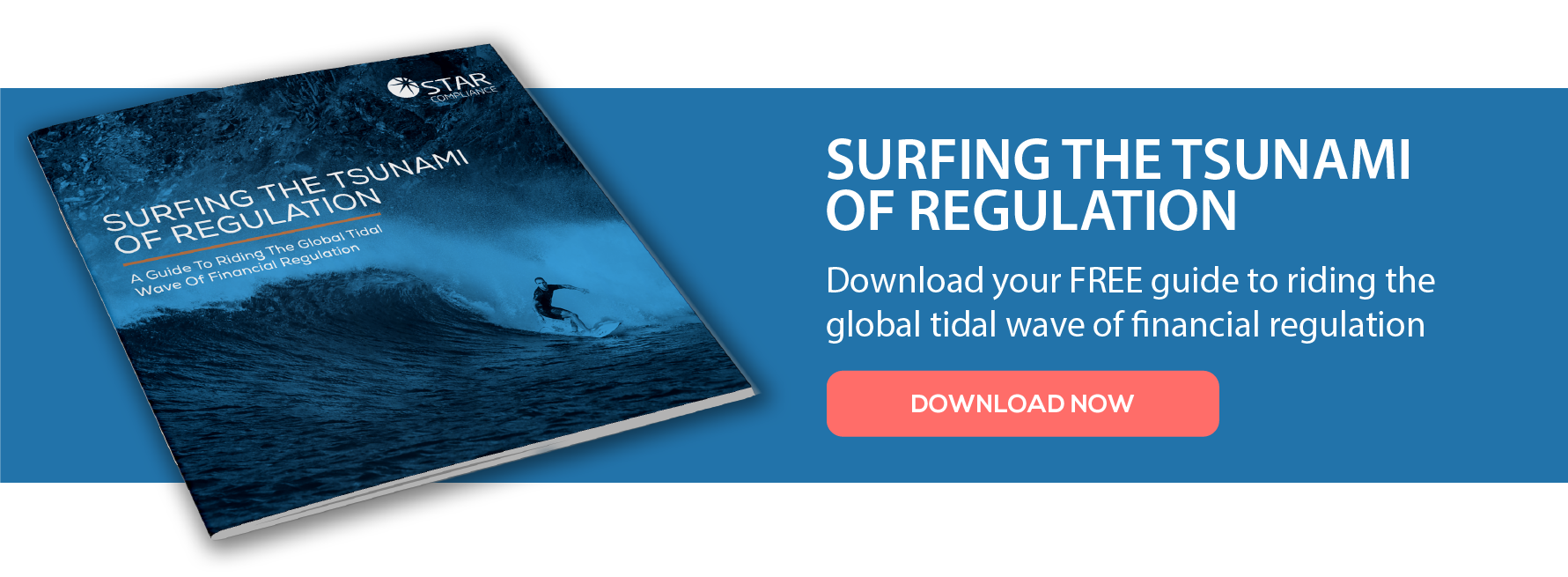What is shadow trading, and what can compliance teams do about it? Star's Head of Business Development and veteran compliance officer Steve Brown recommends firms take these precautionary steps to minimize risk.
How to Prevent Shadow Trading [3 Tips]
Detect Illegal Shadow Trading With Compliance Technology
What is Shadow Trading?
The US Securities and Exchange Commission (SEC) prosecutes roughly 50 insider trading cases each year. Until 2021, each case was much like the last, involving insider transactions that could easily be categorized as classical insider trading, misappropriation of information, or tipper/tippee liability. That all changed with a recent SEC filing against a former pharmaceutical company executive for what has now been dubbed shadow trading.
What is shadow trading? According to Akin Gump, shadow trading “involves buying or selling the securities of one company while in possession of confidential information of another closely correlated or ‘economically-linked’ company.” This trade would be made based on the “linked” company’s material nonpublic information, or MNPI.
Shadow trading differs from classical insider trading in that it involves trading stocks in a third-party or competing company rather than one’s own company or a pending acquisition or merger.
Shadow trading is challenging to identify, as it requires compliance teams to have:
- A broad range of data identifying securities linked to business entities, industries, and economic activity types at their disposal
- The means and technology to analyze these dimensions against employee trades, MNPI, and watch, restricted, or blackout lists
Compliance needs to be able to take a broad set of potentially unrelated and unorganized data points and find the signals within the noise that indicate this new type of insider trading. To do this, firms need to tag companies within a sector or establish sector hooks to conduct surveillance and minimize compliance risk.
How to Prevent Shadow Trading [3 Tips]
At the moment, the SEC considers shadow trading a new theory, an entirely novel expansion of insider trading law. Until the SEC or the courts offer more clarity on shadow trading, StarCompliance recommends firms take certain precautionary steps.
1. Review Employee Trading Policies
In light of the new regulatory focus on shadow trading, greater scrutiny is needed to determine whether employee trading policies achieve the desired risk tolerance for your firm:
- Assess the degree of available MNPI for employees specializing in an industry sector.
- If you find that MNPI is readily accessible, determine whether current employee trading policies are restrictive enough to address potential conflicts of interest and insider trading of any kind.
- It may also be beneficial to restrict sector-specific trading for individuals most likely to obtain MNPI regarding industry movements, such as bankers, traders, and research analysts.
2. Implement Sector Surveillance to Capture Shadow Trading Scenarios
Market-data technologies allow firms to monitor:
- Individual issuer securities
- Derivative securities
- Sector-specific/non-diversified/non-broad-based funds that are both sector- and employee-specific
Consider using security identifiers—such as business entities, individual securities, industry sectors, and economic activities—as data points or hooks to facilitate employee trade surveillance for shadow trading; all are widely accepted data protocols for tagging companies.
Some of the most common security identifiers include:
- Global Industry Classification Standard: An industry taxonomy for use by the global financial community. The GICS structure comprises the 11 sectors, 24 industry groups, 69 industries, and 158 sub-industries into which S&P has categorized all major public companies.
- The Reference data Business Classification (“TRBC”): An industry classification covering over 2.7 million entities in 130 countries to 5 levels of granularity, comprising 13 Economic sectors, 33 Business sectors, 62 Industry groups, 154 Industries and 898 Activities.
- Industry Classification Benchmark (“ICB”): An industry classification taxonomy used to segregate markets into sectors within the macroeconomy. The ICB uses a system of 11 industries, partitioned into 20 supersectors, which are further divided into 45 sectors, which then contain 173 subsectors.
- Data Universal Numbering System: A unique nine-digit numeric identifier assigned to a single business entity.
- Committee on Uniform Securities Identification Procedures: A unique nine-digit numeric or nine-character alphanumeric code to identify a North American financial security.
- International Securities Identification Number: An International Securities Identification Number to uniquely identify a security.
- Standard Industrial Classification: A four-digit code used by government agencies to classify industries and industry areas.
- North American Industry Classification System: A classification of business establishments by type of economic activity used by governments and businesses in Canada, Mexico, and the US.
- Financial Instrument Global Identifier: An open standard, unique identifier of financial instruments assigned to common stock, options, derivatives, futures, corporate and government bonds, municipals, currencies, and mortgage products.
- Legal Entity Identifier: A unique global identifier for legal entities participating in financial transactions for identification through a globally accessible database.
3. Update Training to Include Shadow Trading and Other Insider Trading Concerns
As shadow trading is still a novel concept, compliance teams should incorporate real-life and hypothetical situations to educate and train employees. Discuss SEC vs. Panuwat, the SEC case that gave shadow trading its name, as well as other insider trading theories:
- The classical theory is the most well-known of these insider trading theories. It involves executives, board members, or agents trading on their company’s MNPI before the release of news about a significant event.
- Misappropriation theory also involves trading on MNPI but from an outsider with a fiduciary duty to the information source.
- Tipper/tippee theory involves an insider receiving a personal benefit after providing an outsider with MNPI that is later used for trading purposes.
Detect Illegal Shadow Trading With Compliance Technology
Shadow trading adds greater complexity to the task of discovering insider trades, but identification is possible. Additional due diligence on the part of compliance teams is required, and compliance tech can (and really must) be a part of that enhanced due diligence process.
Automated software platforms like Star’s Insider Trading Compliance Software can help compliance officers corral, sift through, identify, and make proper sense of large data sets coming from all angles.
The Insider Trading Compliance Solution puts employee trades into context and protects your firm by:
- Automatically screening for employee trades that occurred prior to key market events, such as price movements, mergers, or acquisitions.
- Enabling you to easily raise a case in the STAR Platform, which includes links to all relevant information and news articles.
- Placing every detail of every project at your fingertips, if and when regulators or issuers ever request an insider list.
Illegal insider trading happens more often than one might think, perhaps as often as four times more than what regulators catch. Those are daunting odds! Make sure your firm avails itself of every opportunity to beat them.



